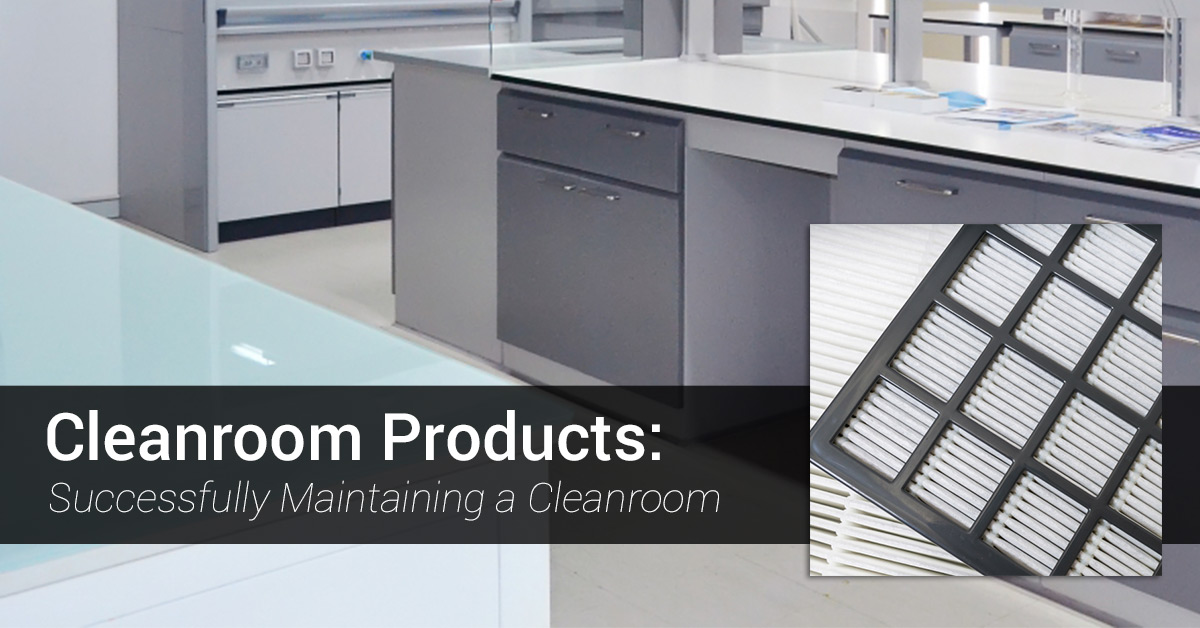Cleanroom Products: Successfully Maintaining a Cleanroom
Posted by SOS Cleanroom on 25th May 2017

Countless businesses and researchers around the world rely on the cleanliness control of a cleanroom to help facilitate their operations. Things like the production of microsystems or the manufacturing of pharmaceutical products require a highly controlled environment with strictly maintained levels of contamination. As such, these delicate and sensitive operations rely on no room for contamination error.
SOS Cleanroom is dedicated to providing the highest level of quality and satisfaction in cleanroom products, whether you research or manufacturing operation requires cleanroom garments, cleanroom gloves, nitrile gloves, sticky mats, cleanroom gowns, or any of our other fine products. Today, we’re going to write about the context of our business, why we do what we do, and what it takes to maintain the highest levels of cleanliness and contaminant mitigation through our years of cleanroom industry experience. Let’s take a closer look.
Recap: What Is a Cleanroom?
Simply put, a cleanroom is a controlled environment where products are manufactured, and can also be defined as a room in which the concentration of airborne particles is controlled to specified limits. When it comes to eliminating sub-micron airborne contamination, it ends up being a matter of control.
How do these contaminants show up? Contaminants are usually generated by people, process, facilities and equipment, and must be continually removed from the air via complex filtration systems. Overall, the extent to which these pesky airborne particles need to be removed is relative to the standards required of a particular operation.
In this industry, the gold standard is considered to be Federal Standard 209E, which is a document that establishes standard classes of air cleanliness for airborne particulate levels in cleanrooms and clean zones. Thus, strict rules and procedures must be followed in order to successfully prevent contamination of the product in question.
Taking a Closer Look at Contamination
Contamination is a process (or act) that causes materials or surfaces to be ‘soiled’ with contaminating substances. Overall, there are two broad categories of surface contaminants: film type and particulates. In the context of fine electronics and semiconductor manufacturing, both of these types of contaminants can produce a sort of ‘killer defect’ in a miniature circuit.
Film contaminants of only 10 nm, or nanometers, can have a drastic effect in reducing the coating adhesion on a wafer or chip. While it is widely accepted in this industry that particles of 0.5 microns or larger are the target, some industries have even stricter regulations that target smaller particles.
Controlling Contamination With Our Cleanroom Products
Without going into exuberant detail about the contamination control process, there are several areas of concern (and several solutions we provide!) that will give you a better idea of contamination control as a concept and as a practice. When providing an effective contamination control program, these are some of the things that need to be considered and followed strictly for contamination mitigation or elimination to be effective:
HEPA (High Efficiency Particulate Air Filter): A HEPA filter plays an extremely important role in maintaining contamination control. HEPA filters will filter particles as small as a microscopic 0.3 microns with a 99.97 percent minimum particle-collective efficiency.
The Design and Architecture of a Cleanroom: Ideally, cleanrooms are designed to achieve and maintain a type of airflow in which the entire body of air within a confined area will move with uniform velocity along parallel flow lines. This type of air flow is known as ‘laminar flow.’ The more restriction of airflow there is, the more turbulence there will be - turbulence can cause particle movement, and therefore, contamination.
Other Air Filters: In addition to HEPA filters mentioned above, there are a number of other filtration mechanisms that are used to remove particles from gases and liquids in a given environment. What these filters are essential for is providing effective contamination control.
Cleaning as a Concept: Naturally, cleaning is a central and essential element of contamination control. So, decisions should be made as to the details of cleanroom maintenance and the extent and type of cleaning required for a given operation.
Applications and procedures need to be written and agreed upon by cleanroom management and contractors, if they’re being used. Those responsible for the management and success of a cleanroom operation should consider the following basic questions:
- What is considered ‘clean’ for this operation?
- How is ‘clean’ measured and quantified?
- What cleaning materials are suitable for use in the cleanroom?
- When can the cleanroom be cleaned? (Time window, etc.)
- How frequently should the cleanroom be cleaned?
Cleaning Commodities: Successful cleanroom management is at least partially dependent on the kind of cleanroom items that you’re using, such as our cleanroom garments, sticky mats, latex gloves, or any of our other fine products at SOS Cleanroom. Additional items like wipers, cleanroom paper and pencils that service the cleanroom should be carefully screened and selected. Usually, many cleanroom managers will have approval lists for these items.
Cosmetic Considerations: A great way to prevent contaminants is to not introduce them into the environment in the first place. Many cosmetic products, such as makeup, contain elements like sodium, magnesium, silicon, calcium, potassium, or iron, which can create damaging particles in the sensitive environment.
Shop SOS Cleanroom For All Your Cleanroom Supply Needs
If it’s extreme levels of cleanliness and contaminant mitigation and prevention that your operation requires, then SOS Cleanroom has exactly what you need. Browse our store now for great deals on cleanroom garments, nitrile gloves, cleanroom gowns, cleanroom sticky mats, wipers, swabs, solutions, and so much more!


